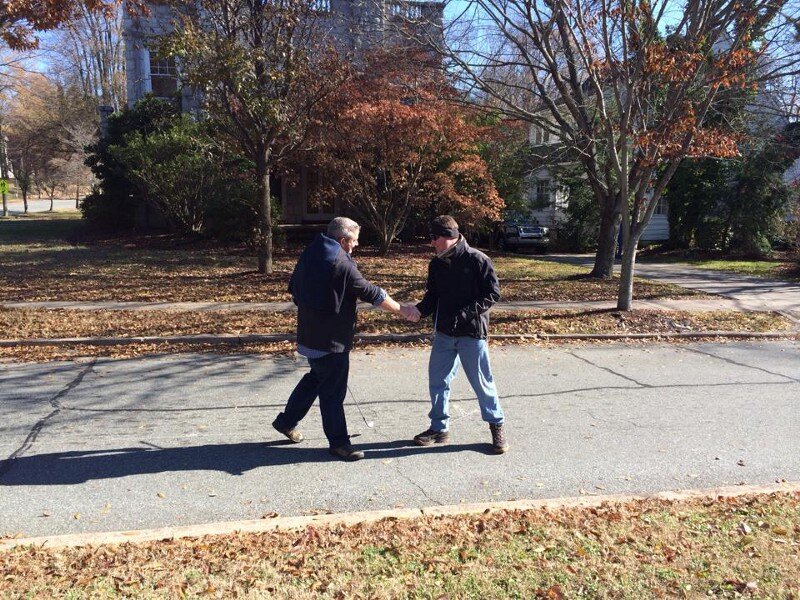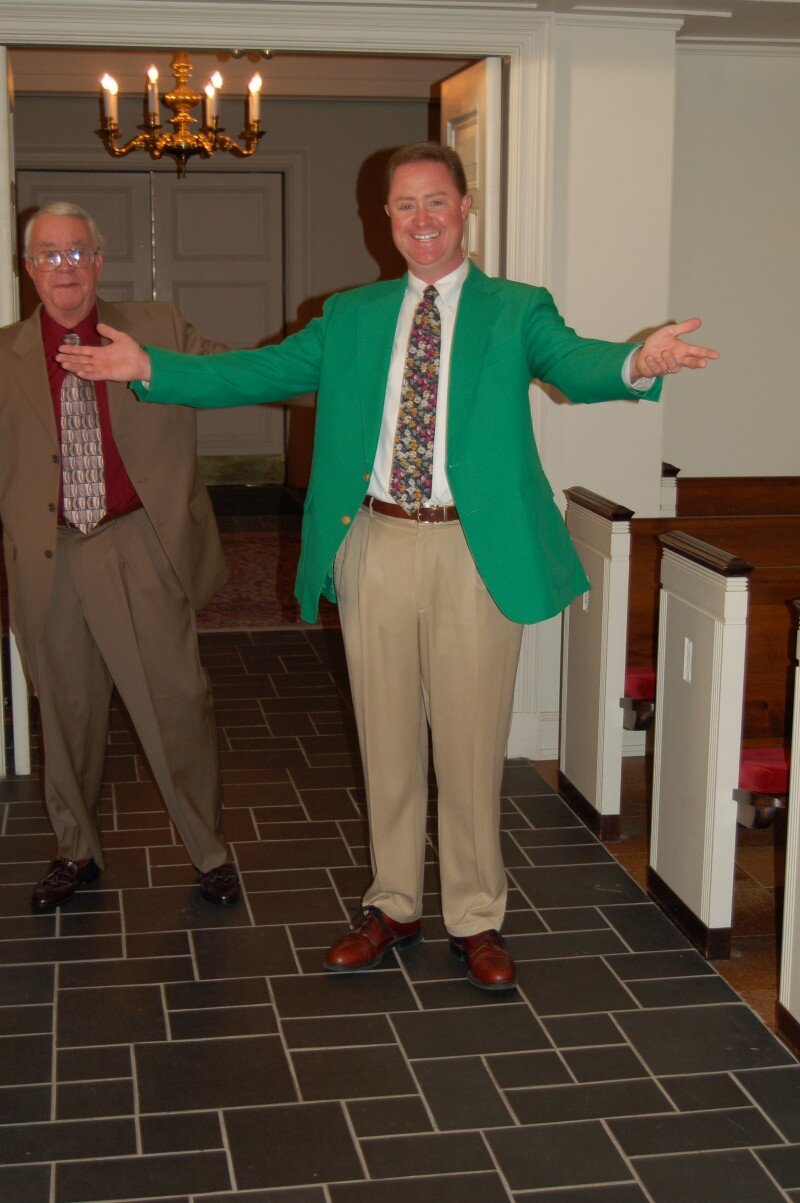Giving Thanks For Street Golf, Our Major Championship
Golf’s two greatest tournaments have only become great over time, because they surely didn’t start that way. The Open Championship, for example, the oldest of golf’s four majors, was born from necessity. When the great Scottish golfer Allen Robertson passed away in September, 1859, the members of the country’s Prestwick Golf Club were left to wonder who would succeed him as the best golfer of the day. Only knowing one way to answer the question, the Club hosted a tournament the following year. Eight golfers competed for the honor. That and a red leather belt with a silver buckle known as the “Challenge Belt.”
For ten years the Challenge Belt was awarded to the winner, but when “Young Tom Morris” won for a third straight time in 1870 he was allowed to keep it for good. There was no tournament in 1871, because there was no longer a belt to award.
What we know now as The Masters, a “tradition unlike any other,” began in 1934. Back then, however, it was only “The Augusta National Invitational.” Bobby Jones, who founded the now historic club and tournament, had hoped to host a U.S. Open there, but the USGA denied his request. Golf’s governing body believed the hot Georgia summers would create playing conditions that were much too difficult. In that first year, the field was therefore comprised entirely of Jones and his close associates. It would be five years before the tournament adopted “The Masters” name, and fifteen before any winner would receive the iconic Green Jacket.
The golf gods have surely smiled upon these tournaments and made them into what they are today.
They have smiled as well on another of the game’s tournaments. One that takes place each year on the day after Thanksgiving. One that winds through the historic district of Burlington, North Carolina, and one that, like The Open Championship and The Masters, was born from humble beginnings.
So humble, in fact, that no one is entirely sure when it began.
Trip Durham, who has won the tournament more times than anyone else, believes it started in 1991 or 1992. Whichever year it was, he was home for the Thanksgiving holiday. While the eating and football watching were plentiful on that Thursday, the Friday had nothing of interest to offer. Bored, he and his younger brother Josh set out from their house on Fountain Place, each with a tennis ball and an old iron golf club. The two young twenty-somethings made their way through the neighborhood, taking turns making up holes as they went, teeing off from the middle of the street or sidewalk and aiming for a tree down the road, or a trash can, or a bush, or a For Sale sign. At each tee they’d decide on the par for the hole, and they each kept track in their heads of their cumulative score in relation to par. During each hole they might occasionally call out how many shots they’d already hit, and after each hole they’d share their running totals.
This is how Street Golf began, as nothing more than a way to kill a few hours of the day. Not even thinking about tradition, but still quite bored, they did it again the next year. Zac, the last of the Durham boys, joined them that time.
With very few exceptions, some combination of the three of them have been playing it on every day-after-Thanksgiving ever since.
In the many years since its modest beginning, the course has taken on a much more regular shape, though Street Golf demands a good degree of flexibility. The boys have long since moved from their pink house on Fountain Place, but if the current residents aren’t there, they’ll tee off from the driveway, just as Trip and Josh did in that very first round. If the residents are home, they’ll start in the street out front.
Looking down the Number One Fairway. Or Number Two. It depends.
From that point, though, what constitutes the entire front nine will be decided as they go. As they stand on whichever first tee box it is in any given year, Trip, Josh, and Zac know only that the turn will be at the far end of Fountain Place, in Willowbrook Park. The actual holes along the way can be anything. The concrete edge of The Fountain. A fire hydrant. Or, sometimes, they might have to roll the ball between the tires of a parked car.
The Fountain has claimed many a ball over the years.
If they hit into someone’s yard, they remove the ball and place it on a nearby sidewalk. In golf, after all, manners matter. When a ball stops in the middle of the road, players can temporarily remove it from the path of approaching cars. There is no need to formally mark its spot; eyeballing it is good enough. Of course, players choose often to leave the ball where it is, hopeful that a passing car might knock it just a little further down the road.
Penalty strokes are rarely assessed, even if someone loses a ball into the creek. Or into a drain in the curb. Or when it never comes down from a tree.
We weren’t kidding about “when it never comes down from a tree” part.
In Willowbrook Park, the hole for Number Nine, like the others before it, can be anything. A swingset. A park bench. A slide. But not the stone wall marking the entrance to the neighborhood. Not anymore. Josh, desperate to make up a few strokes one year, went for the wall too aggressively. The ball sailed high above the wall and bounced into Church Street, one of the town’s main, and busiest, streets. It struck a passing car, and play was temporarily suspended as the brothers debated whether to make a run for it.
After finishing Nine, they make the turn. They keep meaning to name the bridge across which they make their way to Number Ten, but they never do.
Making the turn in 2014, with Edward in the gallery.
Number Ten is the course’s signature hole. If there were ever to be a postcard made of this championship, to be sold in a souvenir tent that might somewhere exist, it would feature Number Ten. From an elevated tee box, players hit back into Willowbrook Park, aiming for any part of the giant oak tree in the distance. From that tree, holes Eleven through Seventeen then wind through the rest of the park and its neighboring roads.
Zac teeing off on Number Ten. Note the gallery off in the distance.
Golf courses, for all their differences, generally finish close to where they start. The first holes start at the clubhouse, and the final holes end up there. So, too, it is with Street Golf. The problem, however, is that Eighteen begins on Edgewood, or West Davis Street, far away from the point of beginning. Most of Street Golf’s holes are deemed to have pars ranging from three to eight. Eighteen here is usually somewhere in the twenties.
So, they hack away. Up Edgewood. Left on Central. Right on West Davis. Keeping watch for cars the entire time and keeping track of their scores. In some years there’s no catching the leader on this hole. In others, it all comes down to this. In as few strokes as they can, they make their way to the stone wall at the top end of Fountain Place, just a few yards, literally, from where they started. When it’s over, they remove their hats and shake hands.
Zac, 2014’s runner up, congratulates Trip, that year’s winner.
Just as it took fifteen years before Augusta National awarded its winner the Green Jacket, it took Street Golf that long to offer its own coveted prize. In anticipation of Zac’s wedding in the fall of 2006, the brothers organized “The Greatest Day of Golf,” in which they played a round of Street Golf followed immediately by a round of real golf. To honor the overall winner, Josh purchased a very special green jacket of their very own from The Salvation Army.
Trip, donning the Green Jacket in 2006. He wore it to Zac’s wedding rehearsal.
The jacket has been awarded to the Street Golf winner every year since. Before the winner can don it, however, his name must first be carefully inscribed inside the lining.
Or written with a Sharpie.
The brothers have played Street Golf at other times during the years, and they’ve even let one or two others in on the fun in those times. But it’s the day after Thanksgiving when it counts, and means, the most.
When these three brothers set out from Fountain Place to play “The Old Course.”
When they give thanks for the blessing of the golf gods above who have given them this time together, this beautiful game, and years of great memories and laughs.
And for giving them the chance to share it with the next generation. In 2015, Josh’s middle child, Edward, made his debut. He finished third, beating Zac by six strokes.
Despite what The Masters may claim, it is Street Golf that has indeed become a tradition unlike any other.
The next generation making his debut in 2015.
The writer. 2015 winner. That’s right. I wear the jacket.










